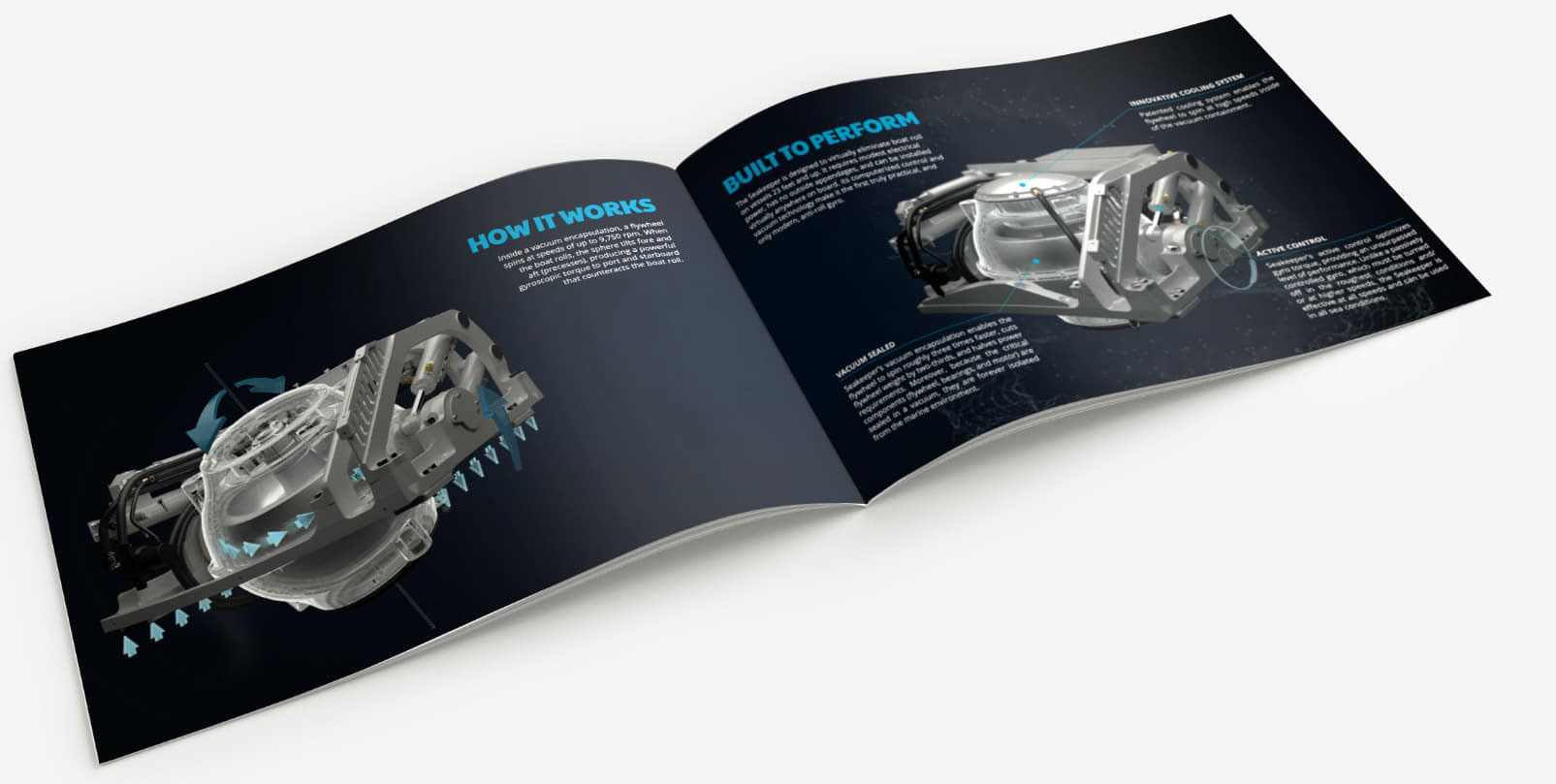Senior Mechanical R&D Engineer
The engineering department’s current project is to develop the next generation of Seakeepers. Development of the 4500 started with the simple question, “Can we add 50% more angular moment inside the same package of a Seakeeper 3?” The second question was, “What inspiration can we take from the Seakeeper 1 to include in the next family? And the third question was, “How can we make it easier to produce, assemble, and service?” My role has been to develop concepts and ideas that answer these questions in an attempt to make the next generation of Seakeepers even better than the previous. The 4500 is now in the testing stage and all the designs that Tyler Dunn and I developed are in the hands of others. Now, my role is to listen to everyone’s feedback about the design and use it as input on how to improve the design, make it easier to assemble, and overall make it better.
I owned my own design firm that helped companies develop prototypes of their products and produced technical videos for their training and how-tos.
December 1st, 2020
The product engineering department grew from three engineers to seven engineers since I’ve been here. Our design capacity has grown substantially, and the overall attitude of the engineering team is very positive. With the addition of the Engineering Support Team (EST), I’ve yet to see a challenge the group hasn’t been able to overcome.
Pin-ina-blanket! The idea is simple. How do you increase the bushing size for the brake while maintaining a pin small enough to be removed for maintenance? You wrap the pin in the rod end with another cylinder of metal. The blanket goes into the rod end and that drops into the gimbal shaft and then you slide the pin in. The execution hasn’t been simple, so we are working on ways to make installations and maintenance easier, and it’s been a challenge getting it dialed in.
Being given the opportunity to teach a younger engineer in building a foundation to become a well-rounded engineer. Passing my experiences and my knowledge of best practices for designing parts, or dimensions drawings so machinists can understand them. How to interact with coworkers in different departments and how to support them in their role when they are making your paper prints a reality. And how, even after 11 years of designing and creating, there is always something new for me to learn as I’m teaching them.
The reward of free lunch.
My role is to develop the best Seakeeper my team can with the most up-to-date data we have. I’m surrounded by very capable mechanical engineers, extremely talented machinists, and very thorough test engineers and because of them, my job of putting all the pieces together into a unified design is easy.
Simplify the problem and focus on the important things. At least that’s what Tyler Dunn said is the best advice I gave him when we started working on the new gyro.
Jim Cullum started work on the M7 back in 2005. Since then he has been heavily involved in the development of every gyro. You’d think someone with that much history would have seen everything before, but that’s not the case. Jim continues having new ideas every week as we make progress on the 4500 and he is always excited to see fresh ideas come across the design table as we work on developing the new family of gyros. When he sees something that could really advance the design, the desire and drive to make it a reality shines through.
“The day you stop learning is the day your industry leaves you behind.” The biggest regret some of my previous mentors have had is that they never kept up with the advancements in the industry. Whether it was learning new CAD software or new programming languages, or how to use Excel. Once these tools became popular they felt their contributions to their work was limited because they couldn’t put the ideas on the new paper everyone was using.
Back in 2015, I worked with a contractor who worked for Mike Gallagher developing the first prototypes for a boat stabilizing system. Before anyone knew my name, other than Mike, I had a small hand in helping kick off what has now become RIDE. In 2020, when I got hired at Seakeeper, my first project was to design the production parts for the RIDE system. My only goal was to make it as attractive as I possibly could.

